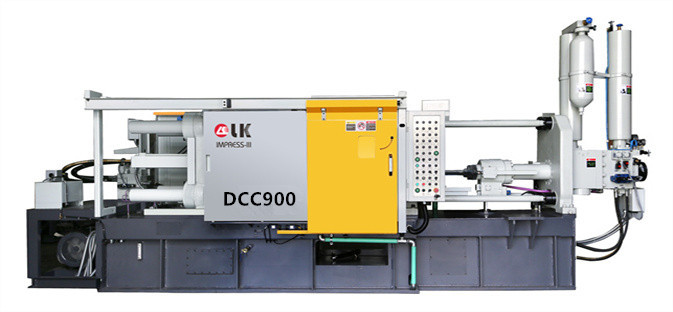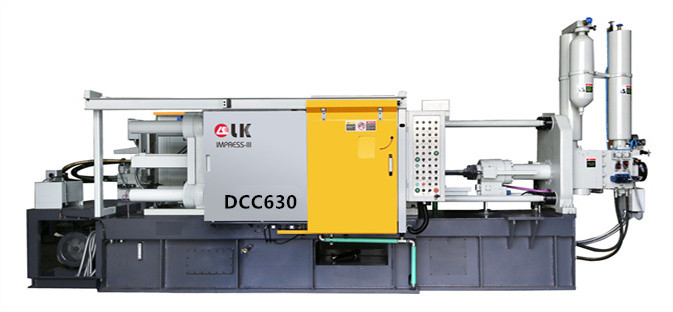Advanced Metal Casting
LK Die Casting Machine / 2024-07-05 15:00:26
I. Introduction
(I) Importance and wide application of metal casting
(II) Brief description of the development background of advanced metal casting technology

II. Classification and characteristics of advanced metal casting technology
(I) Pressure casting
Principle and workflow
Advantages: such as high production efficiency and good dimensional accuracy
Application examples: automotive parts manufacturing
(II) Centrifugal casting
Working principles and characteristics
Applicable metal materials and product types
Successful case: manufacturing of large pipelines
(III) Lost foam casting
Unique process
Advantages compared to traditional casting
Application in the production of complex-shaped parts
(IV) Precision casting
Introduction to its high-precision implementation methods
Material selection and processing
Commonly used in the manufacture of parts in the aerospace field
III. Process flow of advanced metal casting technology
(I) Mold design and manufacturing
Mold material selection
How to use computer-aided design to optimize mold structure
(II) Metal smelting and pouring
Temperature control during smelting and impurity removal
Pouring skills and precautions
(III) Solidification and cooling
Factors affecting the solidification process
The influence of cooling rate on casting quality
(IV) Subsequent treatment and processing
Cleaning and surface treatment methods for castings
Necessary machining and heat treatment
IV. Materials science in advanced metal casting
(I) Commonly used metal materials and their properties
Characteristics and applications of aluminum alloys
Types and characteristics of cast iron
Application of titanium alloys in high-end manufacturing
(II) Research and development and application of new alloys
Introduction of some new alloys with special properties
Advantages of these new alloys in advanced casting
(III) Relationship between material microstructure and performance
Explain the influence of metal crystal structure on casting performance
How to improve casting quality by controlling microstructure

V. Quality control of advanced metal casting
(I) Common defects and causes
Formation mechanism of defects such as pores and shrinkage cavities
Sources and effects of inclusions
(II) Quality inspection methods
Application of non-destructive testing technology, such as X-ray flaw detection, ultrasonic testing
The importance and methods of destructive testing
(III) Establishment of a quality control system
Quality monitoring of the entire process from raw material procurement to finished product delivery
Personnel training and formulation of quality management standards
VI. Development trends of advanced metal casting technology
(I) Intelligence and automation
Intelligent casting production under the background of Industry 4.0
Application and development of automation equipment in the casting process
(II) Green environmental protection
Energy-saving and emission-reduction measures and technological innovation
Research and development of environmentally friendly casting materials
(III) Combination of additive manufacturing and casting
Introduction to the application of 3D printing in casting mold manufacturing
Complementary advantages of additive manufacturing and traditional casting processes
VII. Conclusion
(I) Summarize the importance and development prospects of advanced metal casting technology
(II) Prospects and expectations for future technological innovation
Contact LK Egypt to learn more info about the die-casting machine
LKAGENT OFFICE DCM
Address: Industry Zone, South of Port Said Kebly, Egypt
https://www.zazdiecasting.com/
Phone: +86 13598704163
Mobile: +20 101 304 3317 +20 150 181 8310
Email: jack@zazmae.com ahmedmahmoud@zazmae.com
#die cast tooling
#trivalent chromate
#rapid prototype casting
#a360 aluminum
#aluminum caster
#aluminum prototype
#ideal 55 slider parts
#density of aluminum kg/mm3
#magnesium sheet metal
#parts of a metal gate
#subcontracting of screw machining for the luxury sector
#wall aluminum
#die casting tooling
#tooling for die casting
#density of aluminium in kg mm3
#clear chromate
#es casting metals
#gating material
#prototype aluminum
#sigma castings
#subcontracting of screw-machining for household appliances
#we squeeze to please machine
#aluminium gravity die casting
#aluminum part
#aluminum rapid prototyping
#nickel casting
#plunger tip for die casting machine
#rapid prototyping aluminium
OTHER CONTENT
-

2024-09-19 14:16:15 LK Cold Chamber Die Casting Machine DCC900 Locking Force: 9000KN Die Height: 400-1000mm Space Between Tie Bars: 930x930mm Shot Weight: 13.5Kg Casting Area Max:2250c㎡
More -

2024-09-19 14:11:06 LK Cold Chamber Die Casting Machine DCC280 Locking Force: 2800KN Die Height: 250-650mm Space Between Tie Bars: 560x560mm Shot Weight: 2.9Kg Casting Area Max:700c㎡
More -

2024-09-19 10:23:07 LK Cold Chamber Die Casting Machine DCC580 Locking Force: 5000KN Die Heigh: 350-850mm Space Between Tie Bars: 760x760mm Shot Weight: 6.9Kg Casting Area Max:1250c㎡
More -

2024-09-19 10:11:20 LK Cold Chamber Die Casting Machine DCC400 Locking Force: 4000KN Die Height: 300-700mm Space Between Tie Bars: 669x669mm Shot Weight: 4.7Kg Casting Area Max:1000c㎡
More

